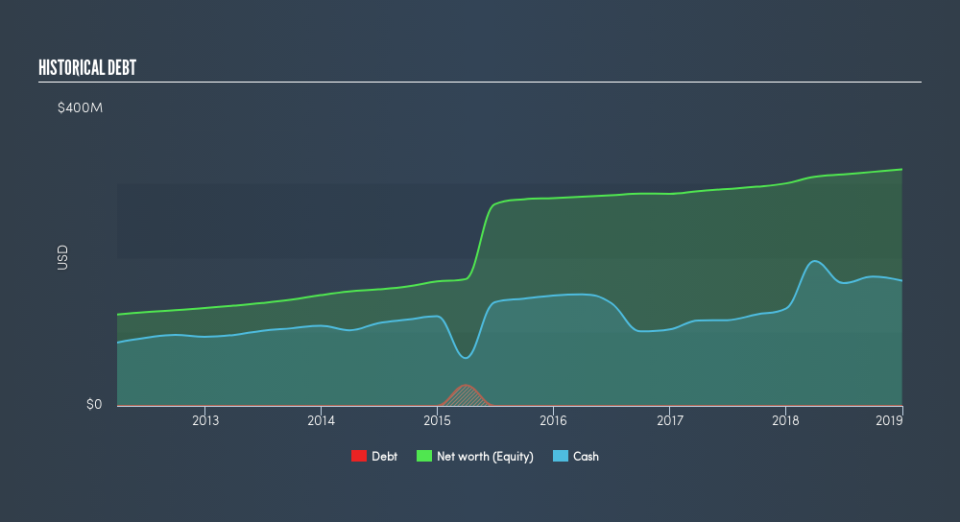Is HealthStream, Inc.’s (NASDAQ:HSTM) Balance Sheet A Threat To Its Future?

HealthStream, Inc. (NASDAQ:HSTM), which has zero-debt on its balance sheet, can maximize capital returns by increasing debt due to its lower cost of capital. However, the trade-off is HSTM will have to follow strict debt obligations which will reduce its financial flexibility. Zero-debt can alleviate some risk associated with the company meeting debt obligations, but this doesn’t automatically mean HSTM has outstanding financial strength. I recommend you look at the following hurdles to assess HSTM’s financial health.
See our latest analysis for HealthStream
Is HSTM right in choosing financial flexibility over lower cost of capital?
Debt funding can be cheaper than issuing new equity due to lower interest cost on debt. Though, the trade-offs are that lenders require stricter capital management requirements, in addition to having a higher claim on company assets relative to shareholders. Either HSTM does not have access to cheap capital, or it may believe this trade-off is not worth it. This makes sense only if the company has a competitive edge and is growing fast off its equity capital. HSTM’s revenue growth over the past year is a single-digit 7.8% which is relatively low for a small-cap company. More capital can help the business grow faster. If HSTM is not expecting exceptional future growth, then the decision to avoid may cost shareholders in the long term.
Does HSTM’s liquid assets cover its short-term commitments?
Given zero long-term debt on its balance sheet, HealthStream has no solvency issues, which is used to describe the company’s ability to meet its long-term obligations. But another important aspect of financial health is liquidity: the company’s ability to meet short-term obligations, including payments to suppliers and employees. With current liabilities at US$107m, it appears that the company has been able to meet these obligations given the level of current assets of US$241m, with a current ratio of 2.26x. For Healthcare Services companies, this ratio is within a sensible range as there’s enough of a cash buffer without holding too much capital in low return investments.
Next Steps:
Having no debt on the books means HSTM has more financial freedom to keep growing at its current fast rate. Since there is also no concerns around HSTM’s liquidity needs, this may be its optimal capital structure for the time being. In the future, its financial position may be different. I admit this is a fairly basic analysis for HSTM’s financial health. Other important fundamentals need to be considered alongside. You should continue to research HealthStream to get a more holistic view of the stock by looking at:
Future Outlook: What are well-informed industry analysts predicting for HSTM’s future growth? Take a look at our free research report of analyst consensus for HSTM’s outlook.
Valuation: What is HSTM worth today? Is the stock undervalued, even when its growth outlook is factored into its intrinsic value? The intrinsic value infographic in our free research report helps visualize whether HSTM is currently mispriced by the market.
Other High-Performing Stocks: Are there other stocks that provide better prospects with proven track records? Explore our free list of these great stocks here.
We aim to bring you long-term focused research analysis driven by fundamental data. Note that our analysis may not factor in the latest price-sensitive company announcements or qualitative material.
If you spot an error that warrants correction, please contact the editor at editorial-team@simplywallst.com. This article by Simply Wall St is general in nature. It does not constitute a recommendation to buy or sell any stock, and does not take account of your objectives, or your financial situation. Simply Wall St has no position in the stocks mentioned. Thank you for reading.

